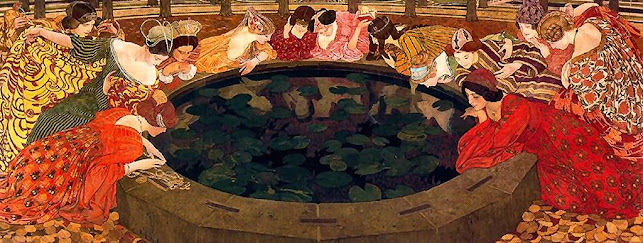What did they wear? Links on Clothing in RPGs
Peasants threshing wheat in breeches and tunics (from the Maciejowski Bible)
https://www.publicecology.de/journal/good-old-linen
Given that most RPG clothing conversation consists of either a series of uniforms (priestly robes, noble finery) or purely as a determinant of armor class, one might wonder why it is useful to keep track of clothing and appearance in tabletop games. Is it purely fluff? I don't think so. In my experience 'fluff' is a failure of design and worldbuilding. Appropriate clothing can open doors that lockpicks won't. Or prevent exposure death, heat exhaustion or disease. I remember one game in which the PCs created a banner that provided them with a bonus to morale as long as it was displayed. Clothes, blankets, banners and other necessities can be worn, torn, lost or burned, creating all sorts of possibilities for mending, replacing or improvising items.
Here are a series of posts on Postej & Stews about Danish medieval clothing, fabrics and dyes, including a large number of high-quality period pictures and a much-appreciated post on commoner's clothing and even underwear.
Dying is another fascinating subject considering the importance and value of colours. Dyes make great treasures or trade goods. Sumptuary laws also present the kinds of complications that make great grist for adventures, increasing the risks of passing oneself off as nobility as well as limiting the market for luxuries like Tyrian purple. Perhaps the most significant purpose for learning about cloth and clothing items is to inform yourself about the people in your setting. Devereaux cites estimates that spinning yarn could take up to 85% of women's labor time in the ancient world and even after the adoption of the spinning a wheel a huge proportion of time even in medieval times (this doesn't including weaving or growing linen or woolgathering). The point is that the production of cloth should be hugely salient a game world. Along with farming these activities would dominate peoples time. This is what they did, what they thought about, prided themselves upon, a key marker of identity. If you wanted to get some NPC villagers to give you room and board why not try asking who the best spinner in town is? You could then buy some wool and then staying in the weaver's barn for a week while she makes you some blankets, find out where the local sheep pasture, inquire after local legends and share news of faraway places. It would go a long way in finding willing allies lead you into the wilderness over some mad undertaking.








Comments
Post a Comment